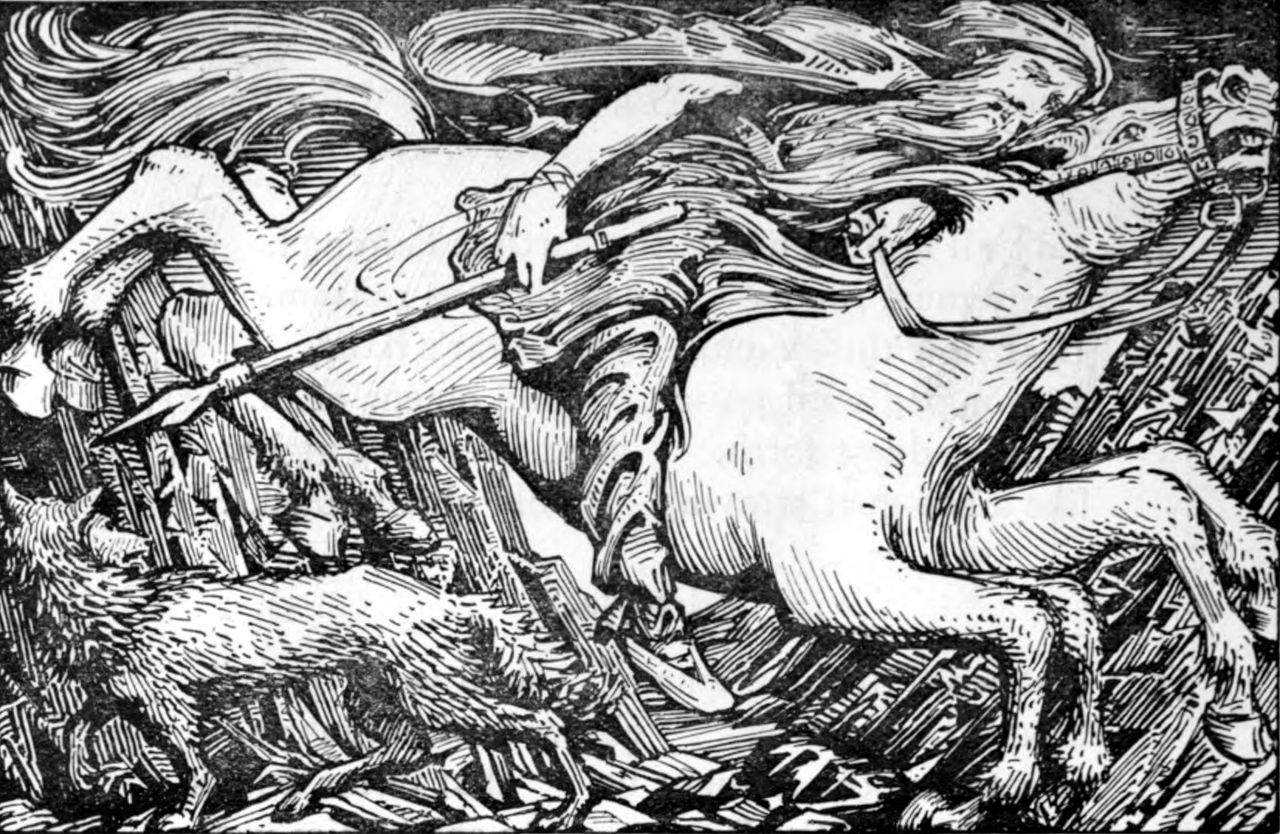Odin was the supreme deity in Germanic paganism or Norse myth. He was the Allfather of the Æsir and lived in Asgard, where he occupied the seat of Hlidskjalf, the magical place or the high seat of the gods from where he could see all nine realms.
He is the god of many things, well known as a wanderer, and for adopting many disguises as he roamed the nine realms, usually searching for wisdom and knowledge.
Odin rode an eight-legged horse and had two ravens as constant companions.
He is also known as Wodan in Old Saxon, Wotan or Wōdenin Old English, and Óðinn in Old Norse.
What is Odin the God of?
Odin is the god of war, poets, and magic; Odin is also a Norse god of alcohol.
The three symbols of the horn Triskelion may represent Odin’s love of poetry and wisdom – and the connection of these to Odin himself (he, himself, is the third symbol).
Where Does Odin Live?
Odin lives in Asgard, the highest and most important realm in the World Tree, Yggdrasil.
He occupies the Hlidskjalf (or Hliðskjálf), the magical place or the high seat from where he has a vantage point of all nine realms.
Which Animals Are Associated With Odin?
In Norse mythology, Sleipnir is Odin’s magical horse.
He has eight legs and runes carved onto his teeth. He is so powerful that he can outrun any horse in the nine realms, fly, and run across the sea.
He is “the best horse among gods and men,” according to the Prose Edda.
Odin is also often accompanied by the wolves Geri and Freki.
Huginn and Muninn are Odin’s pair of ravens in Nordic myth. Huginn is old Norse for “thought,” and Muninn means “memory.” Depictions often show these black birds sitting on or flying around Odin’s shoulders.
At sunrise every day, Odin would order them to gather news from across the nine realms and report back to him at breakfast.
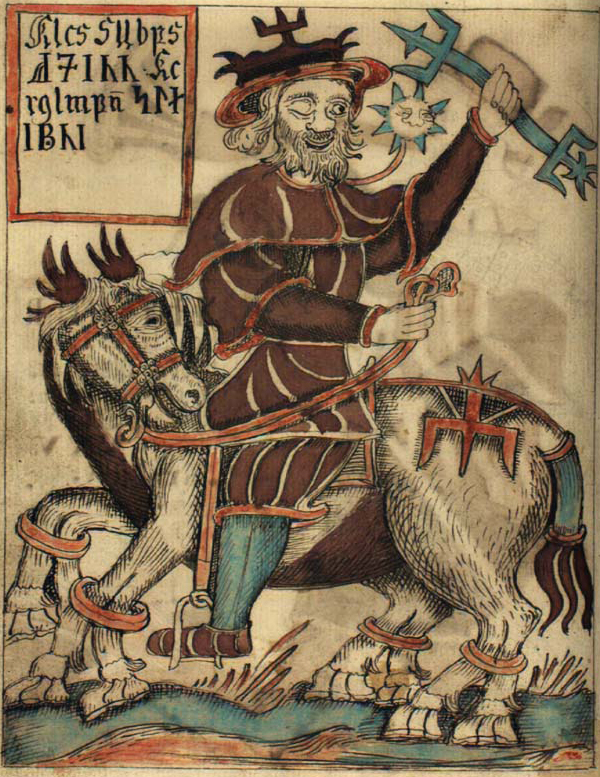
What is Odin’s Weapon?
Odin often appears wielding his spear, Gungnir.
Odin killed the giant Ymir with Gungnir; so much blood poured from the wound it drowned all the jötnar (giants) except for Bergelmir and his wife.
What magic does Odin Use?
Odin is the Norse god of magic, and although he uses his powers mainly to disguise himself (as Hár or Bölverk), he is also a shapeshifter. He turned himself into a snake to crawl through a hole he made in a mountain to steal the mead of poetry.
After receiving the head of the sage Mímir, he cast a spell on it to bring it to life again so it could counsel him and reveal more of Mímir’s secrets.
Is Odin Good or Evil?
Odin is represented as being somewhere between good and evil in Norse mythology.
He was undoubtedly obsessed with acquiring all the wisdom and magic in the world, and these quests could make him appear ruthless. Some of his actions had destructive and creative sides: he killed the giant Ymir but then created Midgard out of his remains.
He helped Sigurd in his quest to kill Fafnir, the dwarf that transformed into a dragon. However, he cursed Brynhildr to eternal sleep and imprisonment after she supported a king against his wishes.
He could be generous. In the Prose Edda, Odin allowed his son Hermóðr to use Sleipnir in his attempt to retrieve one of his other sons, Baldr, from Hel.
Odin had good intentions when he decided to raise Loki as his own. However, his idea of using him to unify the Æsir and the jötnar could also be interpreted as being somewhat self-serving.
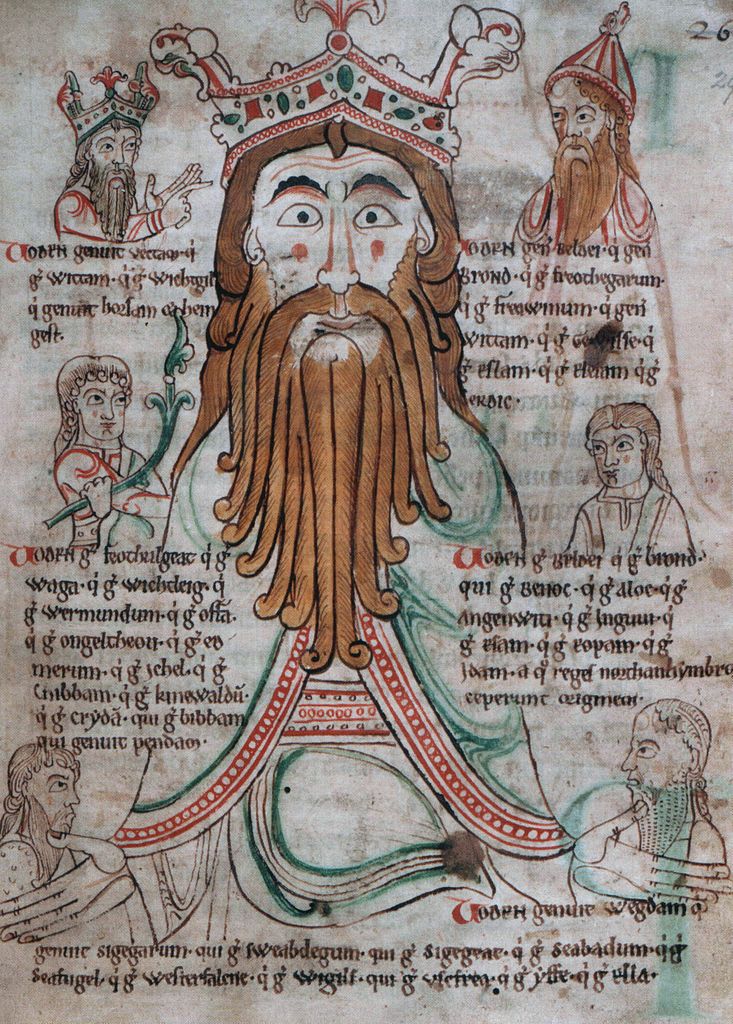
Odin’s Symbolism in Norse Mythology
Symbols are particularly significant in the Viking age. One of the best-known is the image of the three interlocking drinking horns, known as the horn Triskelion or the triple-horn.
Horn-drinking vessels were essential to traditional Norse toasting rituals and strongly connected to myths and legends about Odin. Some academics have postulated that the Odin symbol of interlinking horns symbolized the close relationships of Norse Vikings cultivated by their social gatherings, with or without their most-important god.
The Roman historian Tacitus believed that the Germanic people, including Vikings, worshiped Mercury. This theory connects with the Latin “dies Mercurii,” the Spanish “miércoles,” the Italian “mercoledì,” or the French “Mercredi,” which are translations of Wednesday or “Woden’s day.”
How Is Odin Related To Other Gods?
Odin is the son of Bestla and Borr (son of Búri, one of the first gods) and has two brothers, Vili and Vé. He fathered many sons, the most famous being Thor (with Jord) and Baldr (with Frigg). However, he is not Loki’s biological father.
Thor
Thor is Odin’s best-known son and the second most famous god. Thor is the protector of humanity in Midgard and, of course, the mighty god of thunder.
Thor uses a hammer called Mjölnir, and he represents bravery, strength, and healing.
Loki
Born of jötnar (or giants), his true parents abandoned him believing him too small to be a proper giant. An invading Asgardian army found him, and Odin took him to Asgard, raising him as a prince.
Odin thought Loki could one day unite Asgard and Jotunheim, creating peace between the two warring worlds.
Bragi
Bragi is the son of Odin and, possibly, the giantess Gunnlod (or Gunnlǫð).
As Odin’s son, Bragi is also a half-brother to Thor, Baldr, Hodr, and Týr, the Norse god of war, law, and honor.
Brothers Vili and Vé
The sons of Bor Burison, Odin, Vili, and Vé created Midgard using the remains of the frost giant Ymir. Ymir is the oldest being in the whole of Norse myth and lived in the primordial void called Ginnungagap.
Frigg
Frigg is Odin’s wife and queen of Asgard. She is a Vanir (from Vanaheim) and the highest-ranking Æsir goddess.
She has three sons with Odin: Baldr, Hermod, and Hodr.
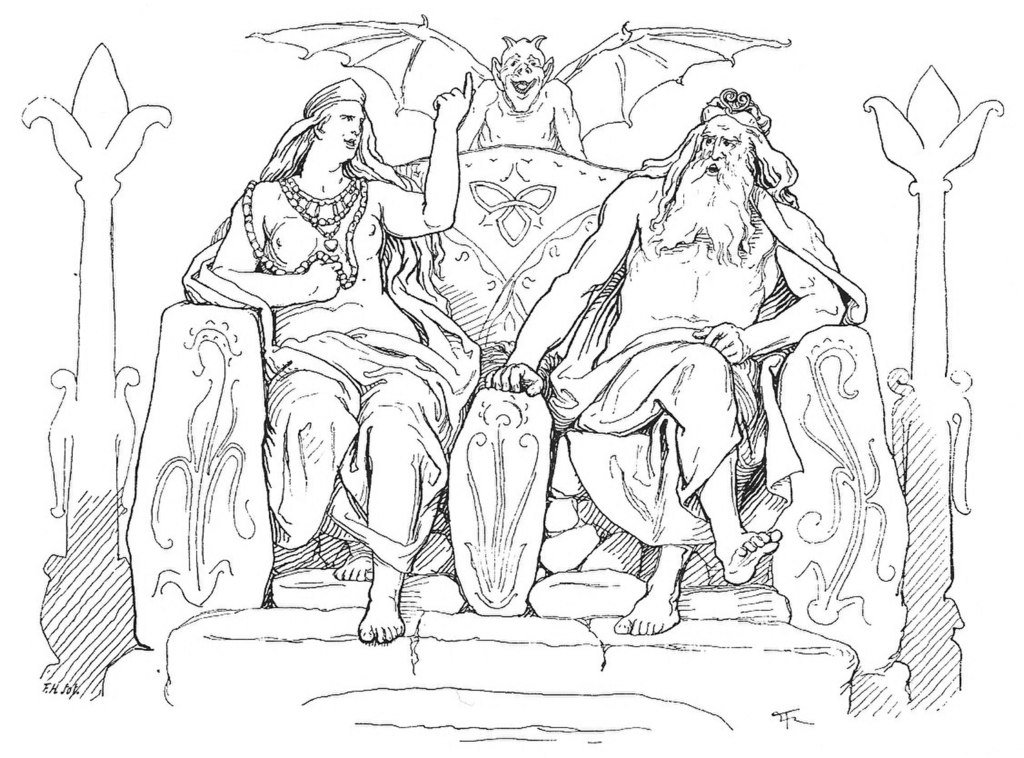
Baldr
Odin and Frigg are the parents of the “gleaming god” of light Baldr (also known as Baldur or Balder). He is also the god of joy and purity and the father of Forseti, the god of justice.
Baldr’s mother made him invincible to attack from anything but mistletoe. Loki tricked Baldr’s brother, Hodr, into throwing a mistletoe spear at him, killing him instantly.
Asgard is sent into mourning by this event, with Baldr’s wife, Nanna, even killing herself when she receives the news.
Hodr
Hodr, also spelled Hod, Höd, Hoder, Höðr or Hodur, is the blind Norse god of the night. He is a son of Odin and Frigg and brother to Baldr and Hermod.
Váli
Odin fathers Váli with the giantess Rindr – Váli matures fully in one day and kills Hodr for his accidental murder of Baldr.
How Powerful Is Odin Compared to Other Norse Gods?
Odin is the most powerful of all the Norse gods.
Although Thor is perhaps the most physically powerful of the pantheon of Æsir gods, Odin is probably a more formidable opponent due to his knowledge of magic.
However, he could still not stop the enormous wolf Fenrir from killing him during Ragnarök. Maybe Odin allowed himself to die, as he had sacrificed himself before in his search for knowledge and wisdom.
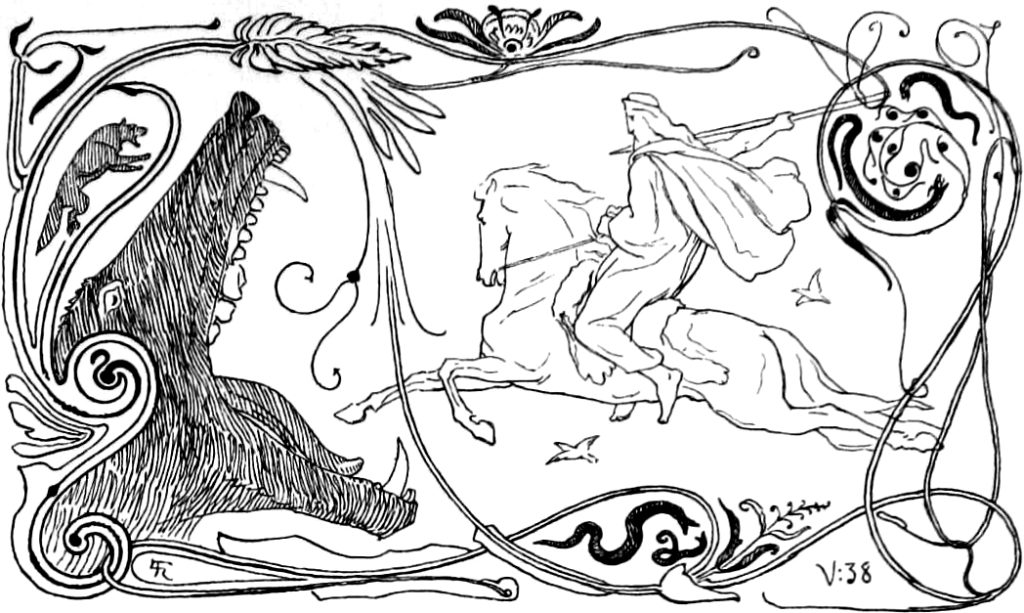
How Does Odin Die During Ragnarök?
Ragnarök was a succession of battles and events that preceded the end of the world. The final stage was a battle at the fields of Vígríðr that pitched gods led by Odin against demons and giants, ending in the destruction of both.
Spawn of Loki, the colossal wolf Fenrir ate Odin whole before one of Odin’s sons, Vidar, wearing a magic shoe that helps him to hold the wolf’s mouth open, killed the wolf by driving his sword through its throat.
What Are Odin’s Best-Known Stories in The Norse Myths?
His thirst for wisdom saw him hang from the World Tree, Yggdrasil, for nine days and nine nights until he became blessed with the knowledge of the runic alphabet.
He also sacrificed an eye to obtain wisdom from the sage jötunn Mimir. Odin later beheaded the giant and carried his head around, listening to the knowledge and advice the jotunn still imparted.
The Ynglinga Saga
Odin appears in Norse literature in chapter two of the Ynglinga saga, the first section of Heimskringla. He lived in “the land or home of the Æsir.” Odin, a great chieftain, ruled Ásgarðr, the capital.
Odin was obsessed with acquiring all the wisdom of the nine worlds. He heard stories about a well called Mímisbrunnr situated in Jotunheim underneath the second root of the World Tree Yggdrasil.
This well was the source of wisdom of the jötunn Mímir who guarded it, and Odin was desperate to retrieve it, so he journeyed to the giants’ realm to bring it home.
Mímir was an ancient being famous throughout the nine worlds for his wisdom. When Odin arrived at the well and requested to drink from it, Mímir told him that he would only allow Odin to do so if he removed one of his eyes and gave it to him.
Odin agreed, took out an eye, and handed it over. Mímir placed the eye in Mímisbrunnr after Odin left.
Lokasenna
Loki taunted Odin for using the magic called seiðr in the Lokasenna. The gods considered seiðr to be effeminate and unsuitable in Asgard.
However, Odin, obsessed with magic and wisdom, was determined to master it.
Vafþrúðnismál
Odin thirsted for knowledge and wisdom and heard of the wise giant Vafþrúðnir. He decided to travel to the jötunn’s home under the assumed name of Gagnráðr to see if he could further his education.
In Vafþrúðnismál, Odin and Vafþrúðnir engaged in a contest of wits. Odin asked, “where do men fight in Herrjan’s courts every day until the wane of the powers?”
The giant replied thus:
All the Einherjar in Odin’s halls
Vafþrúðnismál: Vafhrúthnir’s sayings – We Vikings
every day together fight;
the fallen they choose,
and from the conflict ride;
beer with the Æsir drink,
of Sæhrimnir eat their fill,
then sit in harmony together
The Einherjar were warriors who had died a glorious death in battle. Odin’s female army, the Valkyries, would carry the corpses to Valhalla, where they would train for the arrival of Ragnarök.
The Gylfaginning
The Gylfaginning is the first section of the 13th-century Prose Edda written by Snorri Sturluson (1179-1241).
It tells of the birth and annihilation of the world of the Æsir and many other features of Norse mythology. The second and third parts are called the Skáldskaparmál and the Háttatal.
The Father of the Fallen
In chapter 20, Snorri Sturluson claims that Odin is known as “The Father of the Fallen” because whenever his troops died under his command, they became his adopted sons. He would send them to Valhalla or Vingólf, a house of gods and goddesses.
In chapter 38, the legendary Swedish king Gangleri (sometimes an alias for Odin) mentioned that if every fallen hero went to Valhalla, it must be full of great warriors. Hárr (another pseudonym for Odin) replied that there was indeed a multitude and that many more would arrive. However, it would still be too few when Fenrir appeared.
Fenrir was the offspring of Loki and the giantess Angrboda. It was a huge, fierce, and monstrous wolf destined to end Odin’s life during Ragnarök.
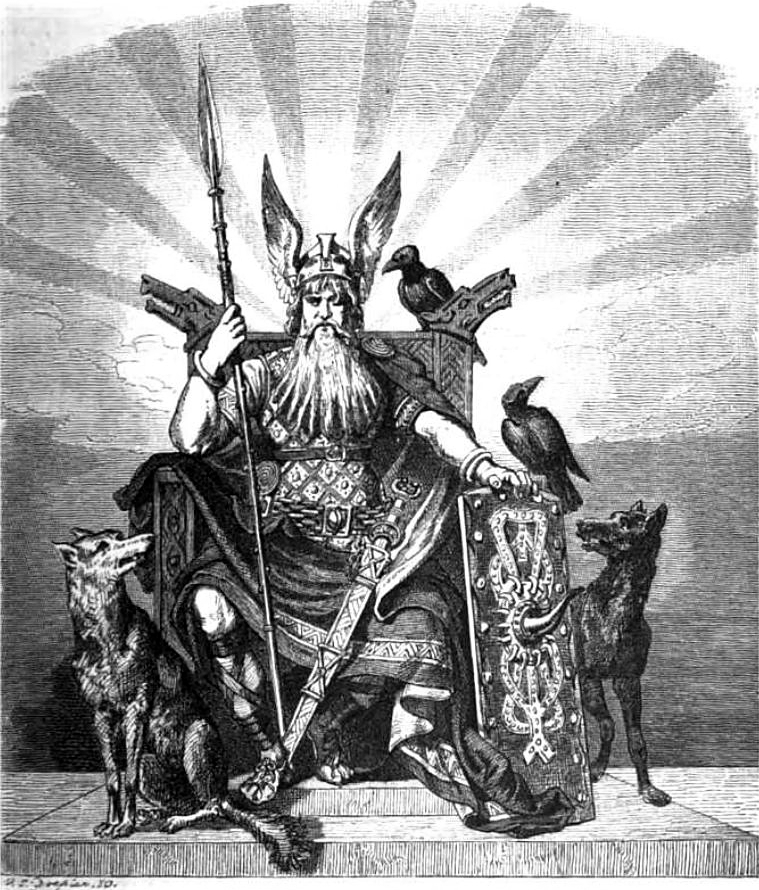
Hárr
Hárr (another alias for Odin) mentioned that there would always be enough meat from the boar Sæhrímnir and enough mead from the udders of the goat Heiðrún.
Sæhrímnir magically resurrected himself daily to be hunted and cooked for the Einherjar to eat. Andhrímnir, the cook of the gods, slaughtered and prepared the pork in the cauldron Eldhrímnir.
Heiðrún, in turn, would fill a large cask that could never be emptied and inebriate the fallen heroes nightly.
Mimir’s Head
After the Asgard-Vanaheim war, the two sides declared a truce and agreed on an exchange of hostages. According to chapter 23 of Gylfaginning, Vanaheim sent its most important people to Asgard: Njord, Freyr, and Freyja (or Freya) were exchanged for Hœnir, whom the Vanir thought would be a great leader. Asgard also exchanged the sage Mímir for Kvasir, whom Sturluson described as the wisest man in Vanaheim.
Hœnir became the king of Vanaheim and appointed Mímir as his advisor. It soon became apparent that the chief could not make any decisions on his own, always answering “let others decide” when asked to make a ruling without Mímir advising him.
The Vanir felt cheated by the exchange and, rather than making an example of Hœnir, beheaded Mímir instead and sent the head to Asgard.
Odin embalmed the head with herbs and used enchantments to give it the power of speech and reveal Mímir’s secrets.
Odin gave Njord and Freyr command of sacrificial customs, and they became known as the Diar (or gods) of Asgard. Freyja was the high priestess of these sacrifices and is credited with introducing seiðr to Asgard.
The Grímnismál
In this stanza of poetry from the Grímnismál contained within the Poetic Edda, it insinuated that he only drank wine:
Gera ok Freka
Grímnismál – Germanic Mythology
seðr gunntamiðr
hróðigr Herjaföður
en við vín eitt
vopngöfugr
Óðinn æ lifir Grímnismál
The second half of this verse translates roughly as: “But on wine alone doth the weapon-glorious god, Othin, forever live.”
However, knowing how obsessed Odin was with wisdom – he even sacrificed an eye to obtain knowledge from the jötunn Mímir – he would surely have partaken of Odhroerir (Old Norse: Óðrerir), the magical mead of poetry and bestower of sagacity, as well.
Hávamál
The Hávamál of “Words of Odin” is a record of the words of advice Odin bestowed upon the human race.
Odin Tattoos
Odin tattoos generally signify wisdom and knowledge, and, as mentioned, Odin’s eye was a significant part of his obtaining those things. Consequently, Odin’s eye tattoos are extremely popular.
Other commonly seen Odin tattoos feature him with Gungnir, his spear, or his two ravens, Huginn and Muninn.
*Make sure to check my article on what Norse tattoos not to get.
Odin’s Depiction in the Marvel Universe
Odin’s depiction in the Marvel movies is correct in that he’s the supreme god of the nine realms.
However, there are also plenty of incorrect deviations: he is the father of Hel (or “Hela” as she is in the movie), he loses his eye in a battle with the “Frost Giants,” and requires “Odinsleep” to regain his powers.

